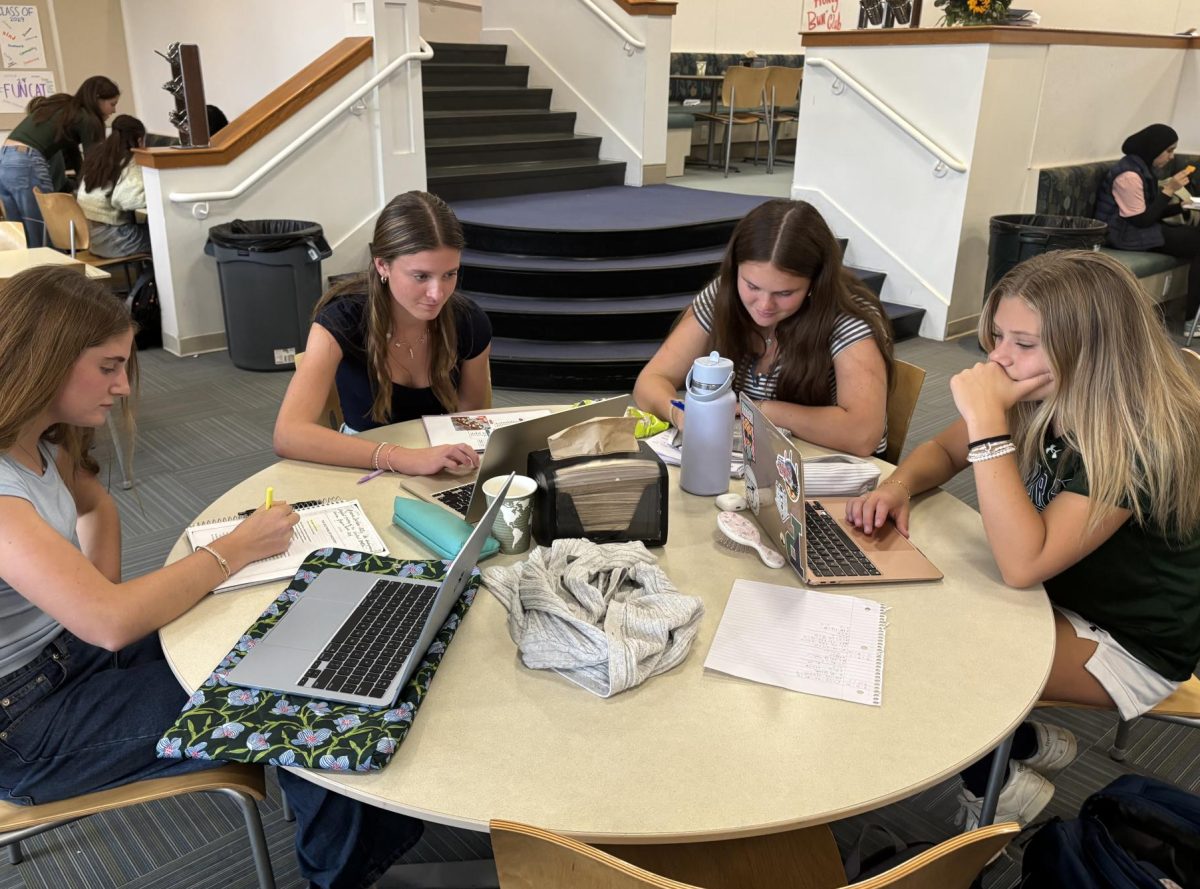Several years ago, Pingree established a gluten-free zone in the Commons to ensure that people who are allergic to – or sensitive to – gluten can obtain safe and healthy food.
Gluten-free refers to a diet that excludes foods containing gluten, a protein found in wheat, rye, and barley. A gluten “allergy” isn’t actually an allergy, but rather a medical condition like celiac disease or non-celiac gluten sensitivity (NCGS), stemming from different causes.
If a person who follows a gluten-free diet eats gluten, they will likely experience symptoms such as bloating, diarrhea, constipation, stomach pain, headaches, fatigue, or brain fog. The severity and type of symptoms, which can vary greatly between individuals, are caused by an immune response that damages the small intestine and prevents nutrient absorption in those with celiac disease.
Despite Pingree’s gluten-free food options, an increasing number of students without gluten allergies are beginning to eat from gluten-free stations. This makes it harder for those who truly rely on these areas.
Senior Kayla Smyrnios, a student who has gluten sensitivity, shares her concerns about the number of gluten-free food options on campus. “I sometimes feel worried if I won’t have anything to eat,” she says, noting food often runs out quickly. She adds that many students don’t realize the gluten-free station is for students with allergies and not just for those with a gluten-free preference. “I hope Pingree can offer more options and that people understand what the gluten-free zone is for.”
Sophomore Anna Hatzigiannis, a student without gluten allergies, says, “I see people grabbing gluten- free snacks multiple times a day even though they are aware that the gluten-free zone is meant for students who medically need it.” Anna believes that the school should restrict the gluten-free meals to students with medical needs. She points out that while most students are having multiple snack choices, such as Doritos and Ruffles, those who are sensitive to gluten rely on the gluten-free zone as the only safe option. She believes that people without gluten allergies have the responsibility to restrain themselves. She also suggests the school make a dedicated fridge with a password only given to gluten free people.
Moreover, as the demand for gluten free food increases, the cafeteria is facing challenges under the constraints of budgets and space.
John, a former staff member in the Pingree kitchen, noted that he had seen an increase in demand for gluten-free meals. He explained the constantly rising food prices in recent years have led to stricter restrictions, making it difficult to stay within the budget. “I want to offer more options for gluten-free students,” he said, “but due to constraints of time, space and other factors, it’s hard to achieve.”
Given these challenges, it becomes even more important for Pingree students to use the gluten-free stations responsibly. Pingree students without allergies should be aware of the needs of gluten-free students and exercise self-control, even if gluten-free snacks seem very attractive. Through practical consideration and respect, everyone in the Pingree community can help create a fairer environment where students with medical needs feel supported and understood.
The gluten-free food issue of Pingree highlights the tension between meeting medical needs and maintaining community equity. The voices from students and staff indicate that awareness, responsibility and cooperation are indispensable. Looking ahead, the community needs to consider solutions, whether through stricter guidelines, better communication, or new systems, to ensure fairness for those who truly rely on gluten-free diets while still balancing the overall resources of the school.








